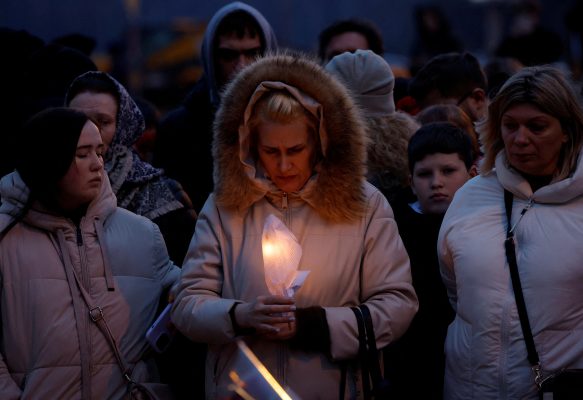It is now two years since the Belarusian dictator Aliaksandr Lukashenka engineered a grave crisis with the European Union (EU) by rounding up developing world migrants and ushering them across the border into neighboring states.
Now he’s at it again, with the possibility that this time, disaffected and combat-hardened soldiers from the now-leaderless Wagner mercenary group will be added to a potentially explosive mix. Lithuania, Latvia, and Poland are anxious and alert to the possibilities.
At the end of August, as cases of illegal border crossings by groups of asylum seekers shoved across by Belarusian border guards increased, the home affairs ministers of the three Baltic states and Poland met in Warsaw to discuss sealing the border completely. (Estonia has no border with the Kremlin-compliant dictatorship but considers itself affected by the issue.) The four states have held regular consultations since 2021.
Two features of the Belarus border crisis make it attractive for the regime. It is easy to recruit migrants eager to reach the West, and the border regions have a low population density, meaning Belarusians are little affected by the issue.
The EU and allies worked hard in 2021 to terminate the flights from the originating countries, with considerable success. But Russia — whose role in orchestrating the crisis remains unclear — soon made alternative land routes available.
The work of Belarusian border guards is key to the scheme. They lead groups of potential asylum seekers to the NATO-EU border, counting on forests and bogs where groups can sometimes hide, despite growing surveillance capacity, until they can cut a wire fence or swim a river. People desperately seeking to enter Europe are thus weaponized to undermine its security.
After serving as a key base for Russian troops, aircraft and missiles to attack Northern Ukraine in 2022, Belarusian authorities have now added a new destabilization risk to their panoply of threats.
Wagner Group fighters were moved to a camp in Belarus following their failed uprising against the Russian state in June. The violent death of their leader, Evgeny Prigozhin, in late August may lead to their return home. But Russia and the Belarusian regime may have other plans, in particular a hope that they can be used to once again intimidate its neighbors.
Which is why the Baltics and Poland agreed that should any incident — such as a massive breach of the border with Belarus — occur, all three countries will act immediately to close all legal border crossing points and strengthen border protection. The same course of action will be taken in case of any incident involving the use of weapons. Poland has already announced the eastward deployment of 500 police personnel and 1,000 troops to meet the increased threat.
It has also already closed all but one of its border crossing points with Belarus, while Lithuania has also sealed some of its frontier posts since the four-nation meeting. Any worsening of the situation could bring a larger crisis — complete closure of the border by Lithuania would mean halting land transit of goods from Russia to its Kaliningrad exclave, which would bring a predictably inflamed response from the Kremlin.
On the Belarus side, the dictator Lukashenka has poured scorn on the four countries’ demands to rid his territory of Wagner. On 30 August, Belarus state media also published a video showing two Latvian border guards walking around the back of a transit truck at the official border crossing point, with the text “Latvian border guards violated state border of Belarus.” Similar claims of irregularities have previously been aimed at Lithuanian and Polish border security staff.
Sustained use of migration as a weapon by the Belarus authorities is, to some extent, a race against the clock, as the Baltics and Poland have substantially beefed up border security since 2021 and will likely complete the construction of border fences (wherever this is possible) within a year or two. The EU has also contributed funds for modern frontier technology.
However, the border crisis, like all hybrid activities, has the potential to escalate quickly. The Baltics and Poland have no choice but to keep it on the radar.
Marija Golubeva is a Distinguished Fellow with the Democratic Resilience Program at the Center for European Policy Analysis (CEPA). She was a Member of the Latvian Parliament (2018-2022) and was Minister of the Interior from 2021-2022. A public policy expert, she has worked for ICF, a consultancy company in Brussels, and also as an independent consultant for European institutions in the Western Balkans and Central Asia.
Europe’s Edge is CEPA’s online journal covering critical topics on the foreign policy docket across Europe and North America. All opinions are those of the author and do not necessarily represent the position or views of the institutions they represent or the Center for European Policy Analysis.





